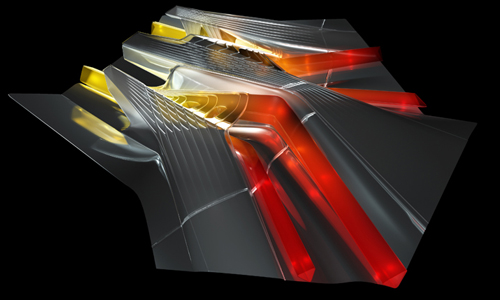
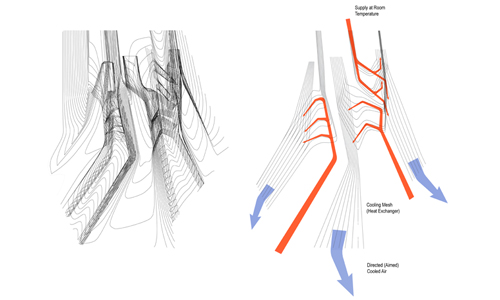
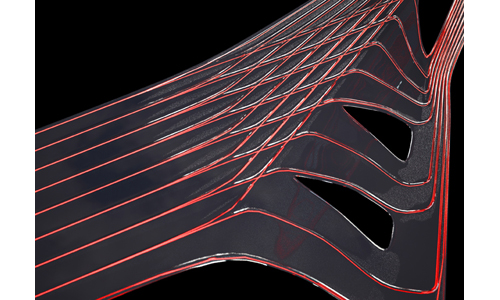
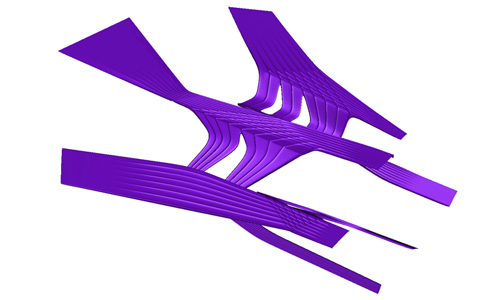
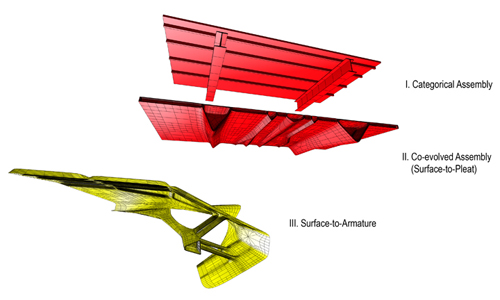
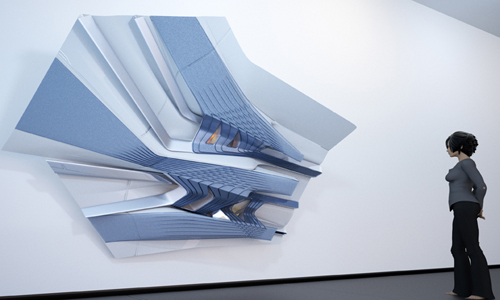
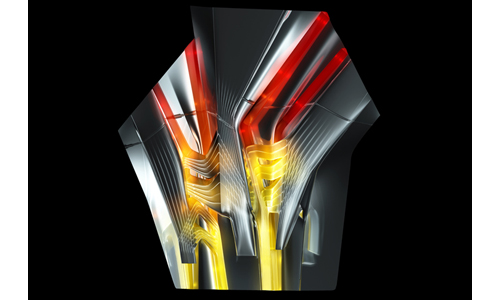
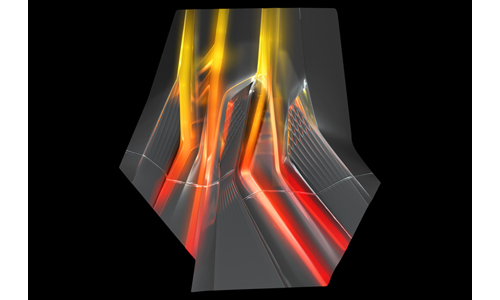
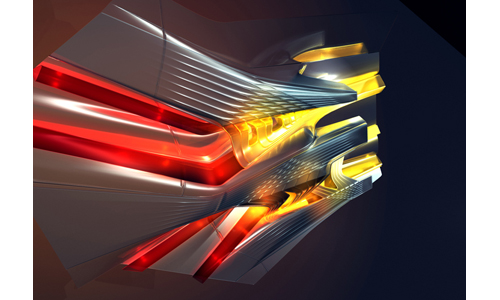
Emergent
architect _ Batwing
Batwing is part of a larger body of work concerned with creating coherent relationships between building systems through geometric and atmospheric means. The aim is to move toward a higher-order emergent wholeness in architecture while still maintaining a performative discreetness of systems.
The project can be understood as an
articulated manifold which incorporates structural, mechanical, envelope, and
lighting system behaviors. This is not to say that any one of these systems is
‘optimized’ in terms of any functional category-- the formal and ambient
spatial effects of fluidity, translucency, glow, and silhouette are all as
important for the overall effect of the piece. The intent is to establish a
link between the sensate realm and infrastructural flows in architecture.
This is different than simply expressing
structure or expressing building technology, making it legible. Batwing is not
the inside-out Centre Pompidou, which represents more than it performs, and
remains a difference in degree rather than a difference in kind. Translation (a
difference in degree) of the ductwork to the exterior doesn’t produce
transformation of the system, or any unexpected or crossover effects.
Now, consider co-evolutionary
transformation of the bloodcomb jellyfish, found in mid-water ocean depths. The
bloodcomb appears to be a single organism but it is in fact two co-evolved
organisms: the jelly and a community of bioluminescent bacteria. The bacteria
live in the ‘paddles’ of the jelly where they thrive, providing a kaleidoscopic
lighting mechanism as they move. This effect makes the jelly invisible to its
deep-water predators, which cannot distinguish that emergent pattern from
sunlight bouncing off the surface of the water above. The two species are
distinct but interwoven in such a way that they cannot be unwound, and their
combination produces sophistication not possible through a single evolutionary
trajectory.
The design sensibility of Batwing is driven by two types of surface transformation: the pleat and the becoming-armature. Pleats operate in terms of providing structural rigidity and directed airflow across the surface while also creating a seductive ornamental patterning. The armature transforms the envelope system into a duct system which provides supply air as well as structural continuity between envelope components. Deep pleats become ‘air diffusers’, featuring an embedded cooling meshwork of micro-capillaries used for cooling or heating of passing air. Based on the principle of water-to-air heat exchange, this cooling system heats or cools through local radiative transfer rather than relying on ‘central air’.
'REF. > Debris' 카테고리의 다른 글
| [pentagram] New Work : Museum of Arts and Design (1) | 2008.09.30 |
|---|---|
| [ NL Architects ] Virtual Realities (0) | 2008.09.14 |
| [ noriko ambe ] works (0) | 2008.08.19 |
| [AOC] Polyopoly (0) | 2008.07.09 |
| [ blu ] 다양한 작품들 (0) | 2008.06.27 |